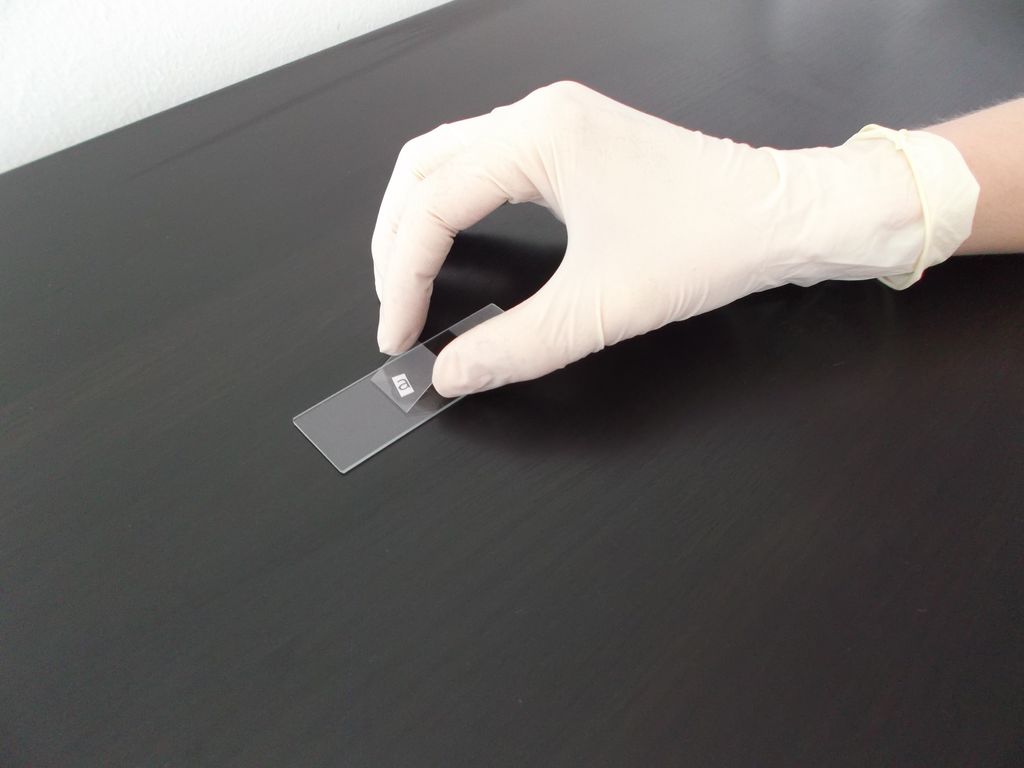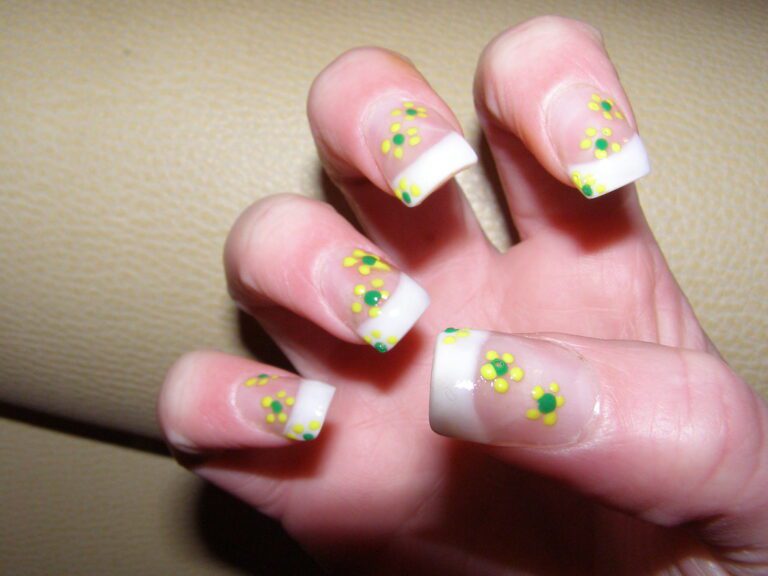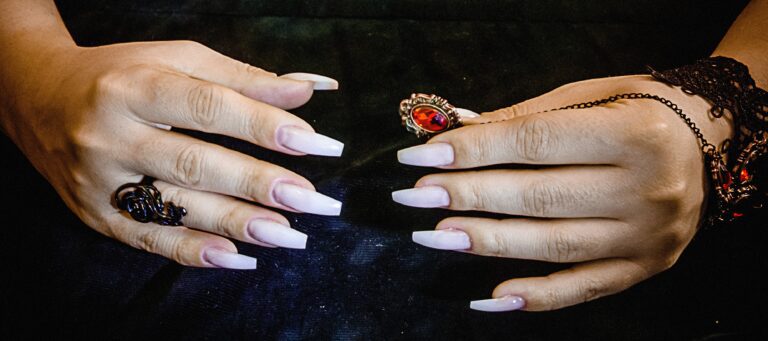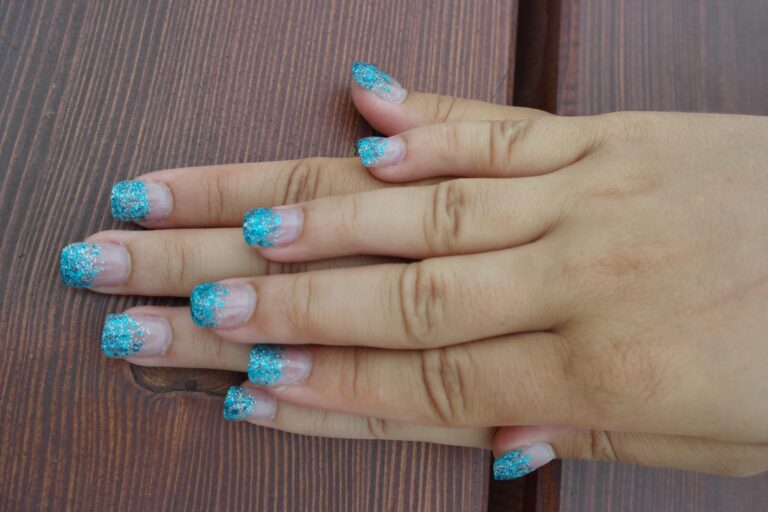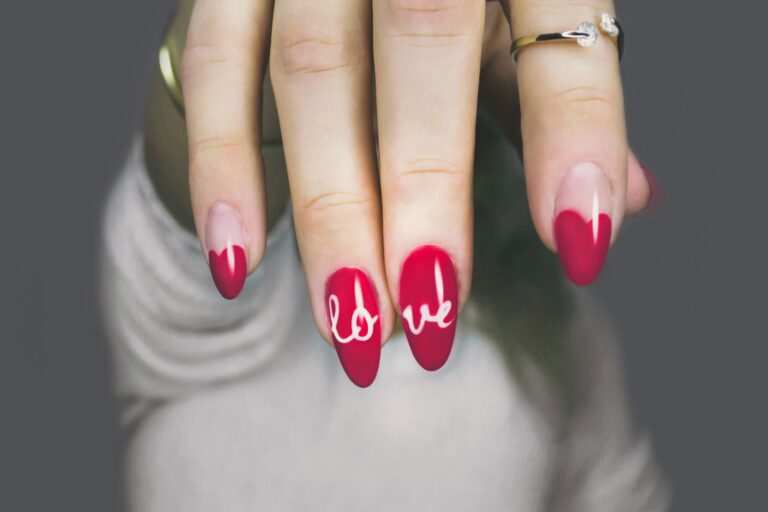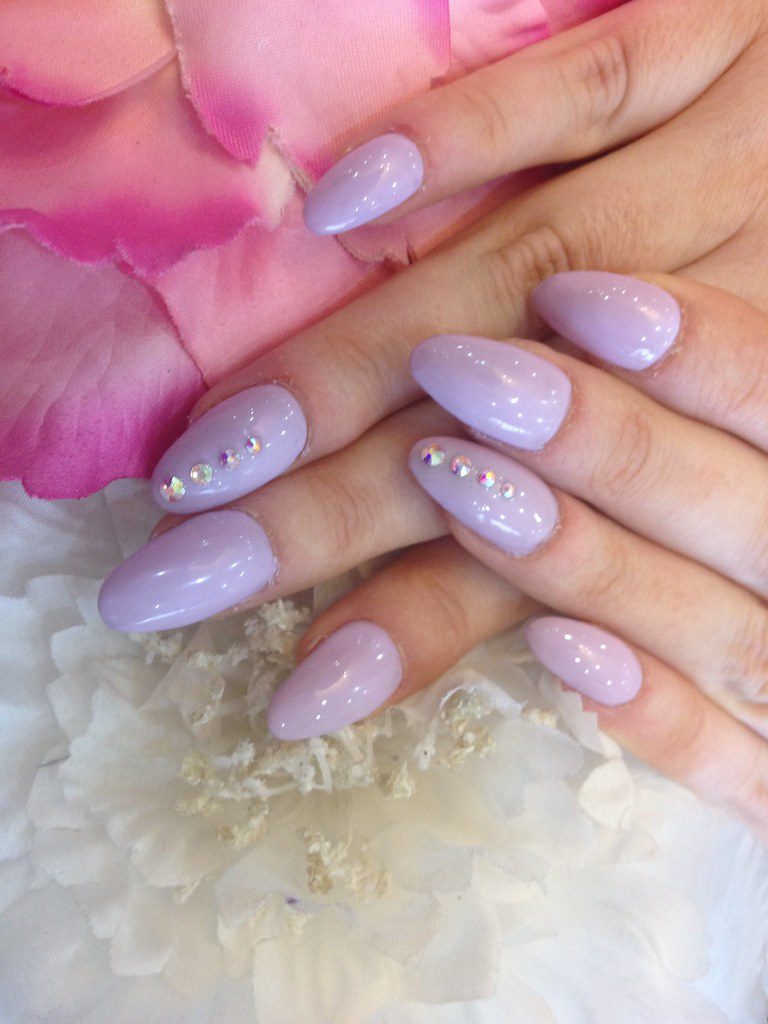“Brittle Mysteries: Why Nails Become Brittle”
Brittle nails can be a source of frustration and discomfort for many individuals. Understanding the factors that contribute to nail brittleness is essential for effective prevention and treatment. This article explores the intricate structure of nails, the science behind brittle nails, medical conditions linked to nail brittleness, environmental and lifestyle factors, assessing and diagnosing brittle nails, and treatment strategies and preventative measures.
Key Takeaways
- Proper nail care practices can help prevent and reduce nail brittleness.
- Nutritional deficiencies, especially in biotin and iron, can contribute to brittle nails.
- Thyroid disorders and anemia are common medical conditions that can affect nail health and contribute to nail brittleness.
- Avoiding prolonged exposure to water and harsh chemicals can help maintain nail strength and integrity.
- Consulting a doctor for proper diagnosis and treatment is crucial if you experience persistent nail brittleness.
Understanding Nail Structure and Growth

The Anatomy of the Nail
The human nail is a complex structure that serves both aesthetic and functional purposes. Composed of a hard, protective protein called keratin, nails are not just a canvas for decoration but also play a crucial role in tactile sensation and the protection of the fingertips.
Nails are made up of several parts, including the nail plate, the visible hard part of the nail, the nail matrix, where nail growth originates, and the nail bed, the skin beneath the nail plate that nourishes and supports it. The cuticle is the tissue that overlaps the nail plate at the base, providing a protective barrier.
- Nail Plate: The hard, translucent part of the nail
- Nail Matrix: The root of the nail where growth begins
- Nail Bed: The skin underneath the nail plate
- Cuticle: The protective tissue at the base of the nail
Tip: Regular moisturizing of the cuticle and nail bed can help maintain nail health and prevent brittleness.
The Nail Growth Cycle
The growth of nails is a continuous process that is influenced by a variety of factors. Each nail begins its journey deep within the nail matrix, a tissue under the skin at the nail’s base responsible for producing cells that become the nail plate. As new cells are generated, older ones are pushed out, harden, and form the visible nail.
Nail growth is not uniform and can be affected by age, season, and health. For instance, nails typically grow faster in summer than in winter. A commonly cited statistic is that nails grow about 0.1 millimetre per day, which is slower than hair growth. This rate can vary among individuals and even between the fingernails and toenails, with fingernails generally growing faster.
Proper nail care is essential for maintaining a smooth nail bed and preventing issues such as splitting or the development of ridges. While the growth cycle is natural and automatic, external factors such as nutrition, hydration, and protection from harsh chemicals can significantly impact nail health and growth.
Tip: To promote healthy nail growth, ensure a balanced diet rich in vitamins and minerals, and consider wearing gloves when using cleaning products to protect your nails from chemical exposure.
Factors Influencing Nail Health
The health of our nails is not solely determined by genetics or our daily routines; it is a complex interplay of various factors. Nutrition plays a pivotal role, as nails require a range of vitamins and minerals to maintain their strength and resilience. For instance, deficiencies in iron or biotin can lead to brittle nails. Hormonal fluctuations, particularly during pregnancy or menopause, can also affect nail growth and texture.
External factors such as exposure to harsh chemicals or frequent hand washing can strip nails of their natural oils, leading to dryness and brittleness. Even the climate you live in can have an impact; for example, low humidity environments tend to increase nail dryness. It’s important to be mindful of these elements and how they can influence nail health.
Remember: Consistent care and awareness of the factors affecting your nails can help prevent brittleness and maintain their well-being. A balanced diet, protective gloves during cleaning, and regular moisturizing are simple yet effective steps in nurturing nail health.
The Science Behind Brittle Nails

Defining Nail Brittleness
Nail brittleness is a common condition characterized by nails that are easily broken, cracked, or split. This condition can affect both the fingernails and toenails, and is often an indicator of underlying health issues or environmental factors. Brittle nails can significantly impact an individual’s quality of life, making daily tasks challenging and affecting self-esteem.
Brittle nails are typically a result of dehydration or lack of moisture within the nail plate. However, they can also be symptomatic of a larger problem, such as nutritional deficiencies or systemic diseases. It’s important to distinguish between occasional brittleness caused by external factors and chronic brittleness that may require medical attention.
Symptoms of nail brittleness include:
- Rough nail texture
- Tendency to split or peel
- Lack of shine and luster
- Increased fragility
Tip: Regular moisturizing and protection from harsh chemicals can help prevent temporary nail brittleness.
Common Causes of Brittle Nails
Brittle nails can be a perplexing issue, often stemming from a variety of sources. One of the most common causes is aging, which naturally diminishes the nails’ ability to retain moisture, leading to dryness and fragility. Environmental factors also play a significant role; prolonged exposure to water or harsh chemicals can strip the nails of their natural oils, resulting in brittleness.
Nutritional deficiencies are another key contributor. A lack of essential vitamins and minerals, such as biotin, iron, and zinc, can impair nail health. Furthermore, external trauma from nail care practices, such as frequent manicures or the use of acrylic nails, can weaken the nail structure over time.
Tip: To maintain nail strength, minimize exposure to water and chemicals, and consider wearing gloves during household chores.
Understanding the underlying causes is crucial for addressing this condition effectively. By identifying and modifying contributing factors, individuals can take proactive steps towards restoring their nail health.
The Role of Nutrition in Nail Integrity
The health of our nails is deeply intertwined with our nutritional status. A balanced diet rich in essential vitamins and minerals is crucial for maintaining strong and resilient nails. Keratin, the protein that forms the bulk of the nail, requires a variety of nutrients to be synthesized effectively.
Certain vitamins and minerals play a pivotal role in nail health:
- Vitamin C is essential for the production of collagen, a protein that supports nail structure and strength.
- Biotin, also known as Vitamin B7, is known for its role in promoting nail growth and preventing splitting.
- Iron is necessary to prevent brittle nails and is involved in oxygen transport to nail matrix cells.
- Zinc contributes to nail integrity by supporting protein synthesis and cell division.
Tip: Consistently including these nutrients in your diet can help prevent nail brittleness and promote overall nail health.
It’s important to recognize that nutritional deficiencies can manifest in the nails. For instance, low levels of vitamin C and folic acid can lead to a loss of nail integrity, resulting in issues such as hangnails. A diet that is diverse and rich in fruits, vegetables, lean proteins, and whole grains is often sufficient to provide these essential nutrients.
Medical Conditions Linked to Brittle Nails

Thyroid Disorders and Nail Health
The thyroid gland plays a pivotal role in regulating numerous metabolic processes throughout the body, including those that affect nail growth and health. An imbalance in thyroid hormones can lead to a condition known as thyroid dysfunction, which often manifests in the nails as brittleness, ridging, or changes in nail texture.
Hypothyroidism, or an underactive thyroid, can cause nails to become brittle, thin, and slow-growing. On the other hand, hyperthyroidism, an overactive thyroid, may result in soft, fragile nails that may separate from the nail bed, a condition known as onycholysis. It’s important to recognize these symptoms as potential indicators of thyroid issues.
Tip: If you notice significant changes in your nails, such as persistent brittleness or alterations in growth patterns, consider consulting a healthcare provider to check for thyroid disorders.
Patients with thyroid disorders may observe the following nail-related symptoms:
- Brittle or flaky nails
- Slow nail growth
- Nail ridges
- Onycholysis (nail separation)
Maintaining balanced thyroid hormone levels is crucial for nail health. Treatment of the underlying thyroid condition often leads to the improvement of nail symptoms. However, it is essential to approach treatment under the guidance of a healthcare professional.
The Impact of Anemia on Nails
Anemia, particularly iron deficiency anemia, can have a significant impact on nail health. When the body lacks sufficient iron, it can lead to a condition known as koilonychia, where nails become thin, brittle, and may develop a concave or spoon-like shape. This alteration in nail structure is not just a cosmetic concern but also a potential indicator of underlying health issues.
Brittle nails caused by anemia are often accompanied by other symptoms such as fatigue, pale skin, and weakness. The severity of nail brittleness can vary depending on the degree of iron deficiency and the duration of the anemic state. It is important to recognize these signs early as they can provide a visual clue to a possible deficiency in essential nutrients.
Tip: If you notice changes in your nail health, such as increased brittleness or alterations in shape, consider having your iron levels checked as part of a comprehensive health evaluation.
Addressing the root cause of anemia can lead to improvements in nail strength and overall health. Treatment typically involves iron supplementation and dietary changes to increase iron intake. Consistent follow-up with a healthcare provider is crucial to monitor progress and ensure that nail health is restored.
Fungal Infections and Nail Brittleness
Fungal infections can have a significant impact on the brittleness of nails. When nails are affected by fungal infections, they may become dry, discolored, and prone to crumbling. In severe cases, the nails can thicken and develop a ragged appearance. It is important to address fungal infections promptly to prevent further damage to the nails. Antifungal medication may be necessary for more severe or troublesome cases of fungal nail infections.
Environmental and Lifestyle Factors

The Effects of Chemical Exposure
Chemical exposure can have a significant impact on nail health. Harsh chemicals found in cleaning products, nail polish removers, and other beauty treatments can weaken the nail structure, leading to increased brittleness and breakage. It’s important to minimize direct contact with these chemicals and use protective gloves when handling them. Additionally, regular moisturizing and nourishing treatments can help counteract the damaging effects of chemical exposure on the nails. Proper care and protection are essential in maintaining healthy and resilient nails.
Water and Humidity: A Double-Edged Sword
While water is essential for maintaining healthy nails, excessive exposure can lead to problems. Frequent hand washing or prolonged submersion in water can strip the nails of their natural oils, leading to brittleness. On the other hand, low humidity environments can also sap moisture from the nails, making them prone to cracking and splitting.
Hydration is key, both internally and externally. Drinking adequate water supports nail flexibility, while using moisturizers can help replenish oils lost to water exposure. It’s a delicate balance to maintain the right level of moisture without overexposing nails to water or dry conditions.
Tip: After washing hands or doing dishes, apply a nourishing hand cream to mitigate the effects of water on nail health.
Here’s a simple list to remember for protecting your nails from the effects of water and humidity:
- Limit the duration and frequency of water exposure.
- Use gloves when doing household chores involving water.
- Apply a quality hand cream or cuticle oil regularly.
- Consider using a humidifier in dry environments to maintain ambient moisture.
Nail Care Practices That Cause Harm
While many individuals enjoy the aesthetic benefits of manicures and nail art, certain nail care practices can inadvertently lead to brittle nails. Frequent use of nail polish, especially when combined with harsh polish removers, can strip the nail of its natural oils, leading to dryness and fragility. Acrylic nails and gel manicures, although popular, can also contribute to weakening the nail bed when used excessively or removed improperly.
Excessive buffing or filing can thin the nails, making them more susceptible to breaking. It’s important to be gentle and use the right tools when caring for your nails to prevent damage. For example, using a glass file can be less harsh than a traditional emery board.
Tip: Always moisturize your nails and cuticles after exposure to water or chemicals to maintain hydration and prevent brittleness.
Here are some common practices that can harm your nails:
- Overuse of nail polish and removers
- Applying acrylic or gel nails frequently
- Improper removal of nail enhancements
- Excessive buffing and filing
- Neglecting to moisturize nails and cuticles
Assessing and Diagnosing Brittle Nails

When to See a Doctor
Determining the right time to consult a healthcare professional about nail brittleness can be crucial for your overall nail health. Generally, if you notice persistent changes in your nails, such as increased brittleness, discoloration, or deformation, it’s advisable to seek medical advice. Here are some specific signs that warrant a doctor’s visit:
- Unusual nail shape or curvature
- Persistent pain or swelling around the nails
- Signs of infection, such as redness, warmth, or pus
- Nails that are significantly different from each other
- Sudden onset of nail brittleness without apparent cause
Remember, while some nail issues can be benign, others may indicate underlying health conditions.
If you’re unsure whether your nail condition requires medical attention, consider the following:
- Have you tried over-the-counter treatments without success?
- Are your nail problems accompanied by other symptoms?
- Have you experienced any recent injury to the nails?
Tip: Keep a record of your nail symptoms and any treatments you’ve attempted. This information can be invaluable to your healthcare provider in diagnosing and treating your condition effectively.
Tests and Procedures for Nail Evaluation
Evaluating the health of nails is a critical step in diagnosing brittleness and underlying conditions. A comprehensive nail evaluation typically begins with a thorough clinical examination, where a healthcare professional inspects the nails for color, texture, and shape abnormalities. This visual inspection can reveal telltale signs of brittleness or other nail disorders.
Following the initial assessment, specific tests may be conducted to pinpoint the exact causes of nail brittleness. These tests range from simple scrapings to check for fungal infections to more complex blood tests to uncover nutritional deficiencies or thyroid issues. In some cases, a nail biopsy might be necessary to rule out serious conditions.
- Clinical Examination: Inspection of nail appearance.
- Fungal Testing: Scrapings for laboratory analysis.
- Blood Tests: To identify systemic causes.
- Biopsy: For detailed tissue examination.
Tip: Always ensure that the healthcare provider conducting the nail evaluation is using standardized procedures to guarantee the accuracy of the diagnosis.
Differential Diagnosis: Separating Brittle Nails from Other Conditions
After identifying the symptoms of brittle nails, it is crucial to perform a thorough differential diagnosis to distinguish them from other nail conditions. This process involves evaluating the nail structure, growth patterns, and any associated symptoms. Additionally, it may include conducting specific tests and procedures to rule out underlying health issues. A differential diagnosis is essential for accurate treatment and management of brittle nails.
Treatment Strategies and Preventative Measures

Topical Treatments and Their Efficacy
When it comes to combating brittle nails, topical treatments are often the first line of defense. These products are designed to be applied directly to the nails and surrounding skin to strengthen and hydrate the nail structure. The efficacy of these treatments can vary based on the active ingredients and the specific needs of the individual’s nails.
Hydration is key for maintaining nail flexibility and preventing breakage. Creams and oils that contain humectants like glycerin, as well as emollients such as lanolin, can provide much-needed moisture. For those seeking to fortify their nails, products containing keratin or biotin may offer additional benefits by reinforcing the nail’s natural composition.
Remember: Consistency is crucial when using topical treatments. Regular application as directed can lead to noticeable improvements over time.
While there is a plethora of options available, here are a few notable mentions that have garnered positive feedback for their strengthening properties:
- Barielle’s Nail Strengthener Cream
- SI-NAILS Nail Strengthener Cuticle Serum Treatment
- Hard As Hoof Nail Strengthening Cream
It’s important to note that while these treatments can provide support, they are not a cure-all and may need to be used in conjunction with other measures for optimal nail health.
Dietary Adjustments and Supplements
The quest for stronger, less brittle nails often leads to the exploration of dietary adjustments and supplements. A balanced diet rich in vitamins and minerals is fundamental for nail health. Biotin, a B-vitamin, is particularly renowned for its role in strengthening nails. Foods high in biotin include eggs, almonds, and whole grains.
In addition to biotin, other supplements may contribute to nail integrity. For instance, gelatin has been suggested to improve nail strength, while calcium and colloidal minerals are essential for maintaining nail structure. It’s important to note that while supplements can aid in nail health, they should complement a nutritious diet rather than replace it.
Tip: Before starting any supplement regimen, consult with a healthcare provider to ensure it’s appropriate for your individual health needs and to avoid potential interactions with other medications.
Marine collagen is another supplement gaining popularity for its potential benefits on nail growth and strength. Users often report seeing improvements in their nails when incorporating collagen into their daily routine. However, individual results can vary, and scientific evidence is still emerging.
Lifestyle Changes to Strengthen Nails
When it comes to strengthening nails, making lifestyle changes can have a significant impact. One of the most crucial lifestyle changes is maintaining a balanced, nutrient-rich diet. This ensures that your nails receive the essential nutrients they need to stay healthy and strong. Additionally, staying hydrated is key for nail health. Adequate hydration helps maintain the moisture balance in the nails, preventing them from becoming brittle. Another important lifestyle change is to avoid over-soaking your nails, as excessive exposure to water can weaken the nail structure. Lastly, implementing a regular nail care routine, including moisturizing and protecting the nails, is essential for maintaining their strength and integrity.
When it comes to nail care, treatment strategies and preventative measures are essential for maintaining healthy and beautiful nails. At NAILinspire.com, we provide a comprehensive online nail art design library where you can explore a wide range of nail care tips, techniques, and inspiration. Whether you’re looking for expert advice on nail treatments or want to discover the latest trends in nail art, NAILinspire.com is your ultimate destination. Visit our website today to elevate your nail care routine and unleash your creativity.
Frequently Asked Questions
What are the common causes of brittle nails?
Common causes of brittle nails include excessive exposure to water, harsh chemicals, and nail care practices that cause damage to the nail structure.
Can brittle nails be a sign of an underlying medical condition?
Yes, brittle nails can be linked to medical conditions such as thyroid disorders, anemia, and fungal infections. It is important to consult a healthcare professional for proper evaluation and diagnosis.
Are there specific dietary adjustments that can help improve nail strength?
Certain nutrients, such as biotin, vitamin E, and omega-3 fatty acids, have been associated with improved nail health. Including these nutrients in the diet may help strengthen brittle nails.
What are the recommended topical treatments for brittle nails?
Topical treatments containing moisturizing ingredients, keratin, and nail-strengthening agents are often recommended for brittle nails. Consult a dermatologist for personalized recommendations.
How can I prevent nail damage from environmental factors?
Protecting nails from excessive water exposure, wearing gloves when using harsh chemicals, and maintaining proper nail care practices can help prevent damage and brittleness.
When should I seek medical attention for brittle nails?
If brittle nails are persistent and accompanied by other concerning symptoms, it is advisable to seek medical attention. A healthcare professional can conduct a thorough evaluation and provide appropriate guidance for treatment.

